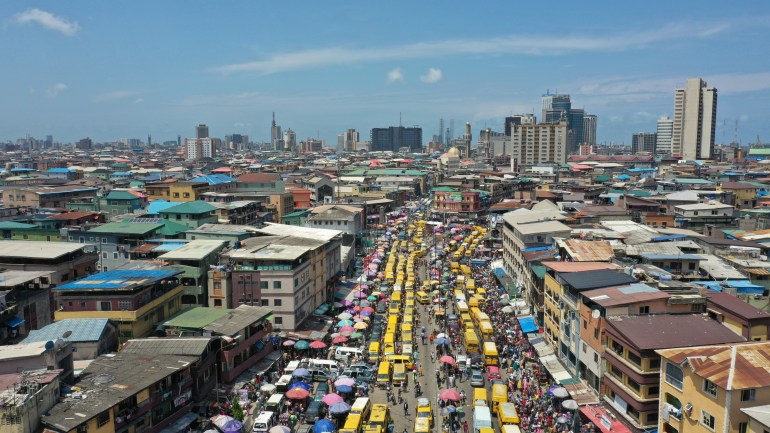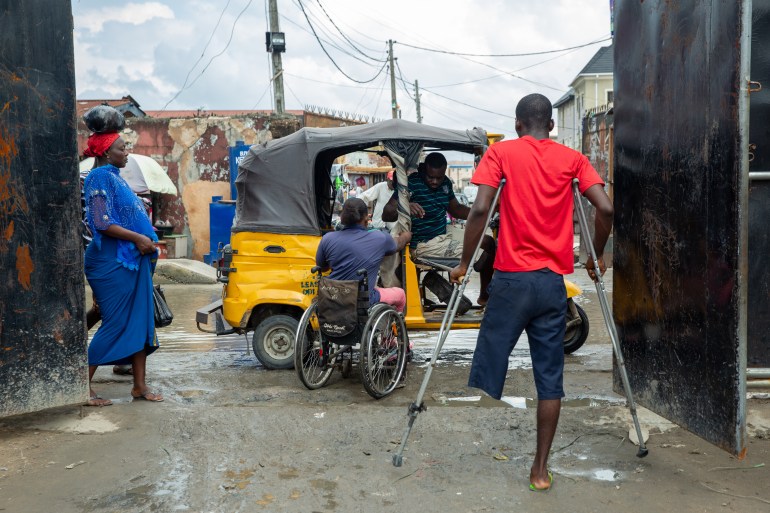Editor’s note: Olajumoke Olajide, an athlete with a disability featured in “Inaccessible Cities,” passed away on March 24, 2022.
Urban populations are booming around the world. By 2050, about 68% of the world’s population is expected to live in urban areas, up from 55% today. About one-third of this growth will come from three countries: China, India, and Nigeria. But as cities expand, large segments of society continue to be marginalized and excluded: people with disabilities.
Unlike other marginalized groups, anyone can become part of the disability community at any point in their life: they may develop a physical disability through accident, illness or simply old age.
Of the more than 1 billion people with some kind of disability, 80 percent live in developing countries.
According to the UN, people with disabilities include people who have “long-term physical, mental, intellectual or sensory impairments which, interacting with various barriers, may prevent them from participating fully and effectively in society on an equal basis with others.”
Lagos, Nigeria, is home to 15 million inhabitants and is one of the largest cities in Africa and one of the fastest growing in the world. Notorious road congestion, unregulated traffic and widespread poverty make Lagos a difficult city to live and navigate. Additionally, poor access to public transport makes travel even more difficult for people with disabilities.
So what does it mean to live with a disability in Lagos, one of the world’s largest cities?
 In Lagos, people compete for space on crowded roads with oil tankers, cars, bicycles and tricycles. [Ebunoluwa Akinbo/Al Jazeera]
In Lagos, people compete for space on crowded roads with oil tankers, cars, bicycles and tricycles. [Ebunoluwa Akinbo/Al Jazeera]
Getting Around Lagos – Snapshots
The average person in Lagos spends at least two hours stuck in traffic every day. With no trains or subways, commuters rely exclusively on cars.
According to Professor Gbadebo Odewumi, Dean of the School of Transport at Lagos State University, 98 percent of traffic is public transport.
But it is unregulated, unreliable and highly inaccessible to people with disabilities.
Lagos has a fleet of 75,000 unregulated, privately owned yellow minibuses, colloquially known as “Danfoss.” These are 20th-century, 14-seater Volkswagen buses with no cushioning in the seats or backrests and run on fumes-emitting engines. The ride experience for passengers with disabilities is heavily dependent on the driver-conductor duo who operate the buses, who decide whether to pick up passengers, who to assist, and who to wait for.
The Lagos government, looking to improve its formal transport sector, entered the public transport business in 2008 with Africa’s first bus rapid transit (BRT) system. This is a bus service that is designed to operate frequently and transport large numbers of passengers. The buses themselves are comfortable and have special seats for disabled people. However, there are only 474 buses in the fleet, and they only operate on major highways.
According to persons with disabilities in Lagos, wheelchair ramps are often not working or are not used, staff are often not trained to help passengers with disabilities board trains, and other passengers are not always considerate of the needs of wheelchair users. For example, seats reserved for persons with disabilities are often occupied by able-bodied passengers.
Lagos also has private transport such as motorbikes and tricycles (called kekes). These are particularly convenient for some disabled people, such as those with visual or hearing impairments, as pick-up and drop-off can be arranged. However, they are less convenient for wheelchair users, as they do not have anywhere to store chairs or other medical equipment.
The least affordable transportation options are e-hailing (Bolt or Uber) and regular taxis. A 40-km trip by Bolt or Uber costs approximately 5,000 naira ($12). Ride-sharing and taxi options are not realistic for many people with disabilities, especially those living below the poverty line, meaning less than $1 a day. Forty percent of Nigeria’s population lives in poverty. It is estimated that nine in 10 Nigerians with disabilities live below the poverty line.
Planning for safer roads and more accessible transportation
Navigating current public transport systems is a major challenge for many people with disabilities.
However, in 2018, the Lagos Metropolitan Transport Authority unveiled a new Non-Motorized Transport Policy (NMT) to reduce congestion, road injuries and deaths, and noise and air pollution. The policy states that “mobility planning should focus on people, not vehicles,” and aims to prioritize walking, cycling, and public transport over car use.
In many places, there are no sidewalks, meaning pedestrians and vehicles share the road, and drivers may drive dangerously or against traffic. The policy aims to reduce pedestrian accidents and deaths by building and improving new sidewalks.
NMT also includes people with disabilities, and there are plans for public transport stations to incorporate features such as ramps and tactile paving on uneven surfaces to warn and guide the visually impaired.
The Lagos city government is also building a light rail line as part of a modernization of the city’s transport system. The first two of seven proposed lines are expected to begin operation by early 2023. Lagos State Governor Babajide Sanwo-Olu said the light rail will be part of a broader system that will be “attractive, convenient, affordable and accessible, and will alleviate urban transport challenges.”
Initiatives such as the NMT and laws such as the Lagos State Special People’s Law, which provides for public transport to be accessible to persons with disabilities, and the Federal Anti-Discrimination Act, support and protect persons with disabilities. However, one of the biggest challenges is poor implementation. For example, the NMT committee to implement the changes was formed just three years after the policy was announced, but there is no set date for completion.
 Olajumoke Olajide, 26, gets on a tricycle to head to the National Stadium, where he trains. [Ebunoluwa Akinbo/Al Jazeera]
Olajumoke Olajide, 26, gets on a tricycle to head to the National Stadium, where he trains. [Ebunoluwa Akinbo/Al Jazeera]
Inaccessible city: Lagos
Ensuring that cities are accessible to people of all abilities is the first step towards true equity and inclusion.
To make Lagos a more accessible city, there needs to be taxi services to transport people with disabilities from their homes to the nearest bus stop, and public transport needs to be made more accessible in line with the Lagos State Special People’s Act.
With no option to move freely and independently within the city, people with disabilities are forced to remain at home and become invisible in Lagos public life.
Caught in a vicious cycle, people with disabilities lack access to education, health care, employment, housing and social security systems, and face prejudice, discrimination and even violence.
For Kelechukwu Ogu, a blind journalist from Lagos, being able to roam Lagos freely and safely is crucial. For years, he has lived with the fear that he might slip into a roadside gutter, get stuck and be hit by a car. At age 10, he once fell waist-deep into an open drain and no one stopped to help him.
“My exposure to open drains and the fear of being hit by a bicycle or a car trained me to endure hunger and want while waiting for my siblings or neighbours to help me buy groceries,” Kelechukwu said.
Watch disabled athlete Olajumoke Olajide walk the streets of Lagos and learn more about life with disabilities in Lagos in “Inaccessible Cities,” the latest interactive web experience from Al Jazeera Digital’s media innovation studio, AJ Contrast.
To understand the state of accessibility in two other major cities, join Rebecca LaMorte, a former city council candidate in New York City, USA, and Nidhi Goyal, a comedian and disability rights activist from Mumbai, India.
With additional reporting by Kelechukwu Ogu.

